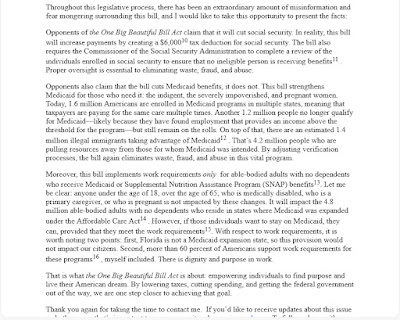I’ve written a lot about politics in this space — usually zoomed in close, responding to the outrage du jour rather than stepping back for the big picture. I’ve long argued that political cartoonists have a rare gift for distilling truth into a single, clarifying image, such as this one by Barry Blitt of The New Yorker that captures the feeling of Thanksgiving this year. It’s ironic, then, that the most incisive political analysis I’ve come across recently comes from a former cartoonist turned writer: Tim Kreider’s new Substack essay, Sang Froid: The Case for Keeping One's Cool.
What sets it apart is not simply the macro-argument, what Trumpism is—how we’ve arrived here, and how democracies slide into authoritarianism—but its structure. Kreider frames the entire piece around a real event from his girlfriend’s youth: a terrifying encounter with a man she later in life recognized as the serial killer Israel Keyes. At seventeen, alone on a mountain trail, she survived by doing the counterintuitive thing: she stayed calm, engaged him directly, made eye contact, and refused to accept the victim role he was trying to impose. Her composure didn’t guarantee her safety, but it allowed her to navigate a situation in which panic would likely have been fatal.
That story becomes Kreider’s central analogy for our lethal national moment — when the danger is obvious to anyone who isn’t in denial, yet the rituals of normalcy compel us to behave as if things are merely “unprecedented” or “norm-breaking” rather than openly authoritarian.
This, I think, is the problem with the newly conciliatory Bill Maher, who now preaches a sort of kumbaya politics that feels more like a policy for “getting along” than one of resistance. For me, January 6 and everything that followed makes that approach unworkable.
Kreider would likely argue that this is also the problem with much of the traditional media: the persistent fantasy that “the system will hold” if only both sides show enough respect and tolerance. Where Kreider and Maher might actually agree is in their fear that the moment we drop the pretense of dialogue altogether, things could tip from a cold civil conflict into a hot one.
With that in mind, Kreider urges a different kind of resistance: to continue exhausting every legal and democratic tool available — courts, protests, boycotts, the defense of immigrants, insistence on due process, and protection of fair elections. The goal is not moral purity but tactical advantage: foul the authoritarian machinery from within the confines of legitimacy, buying time until circumstances shift. And when they do, the very Republicans who have bent the knee to Trump may ultimately turn on him the instant he becomes a liability.
In the end, what Kreider offers is a reminder that composure is a strategy that neither underestimates the danger nor romanticizes resistance. We only have to keep the machinery of democracy running long enough for the forces opposing it to exhaust themselves or turn on one another. And as his girlfriend’s story makes clear, survival sometimes depends less on bold, dramatic gestures than on the simple refusal to play the role the aggressor has written for you.
Full circle now, with Thanksgiving in mind. Fifteen years ago I marked the holiday with a photograph of my younger family and a warning about “increased polarization in this country.” That was during the Tea Party’s rise — a tremor we now recognize as the prelude to all that followed. So I’ll end as I did then, with something simple and still true:
To friends and family, near and far, Happy Thanksgiving — my favorite holiday, and a uniquely American one.





.jpg)








